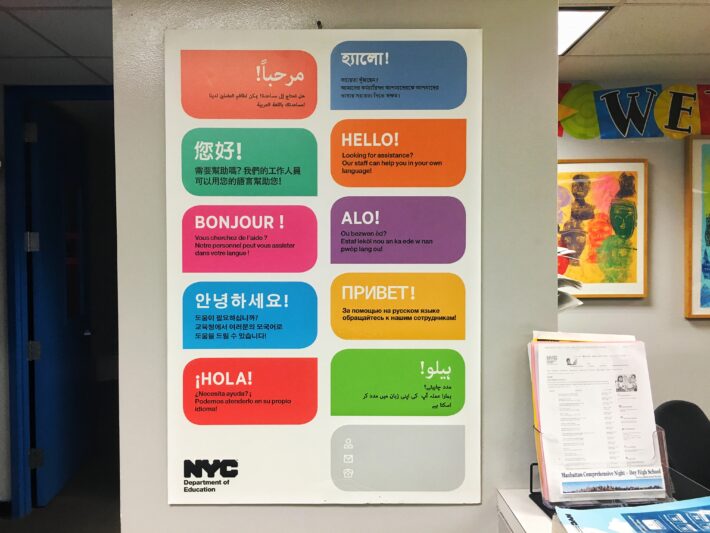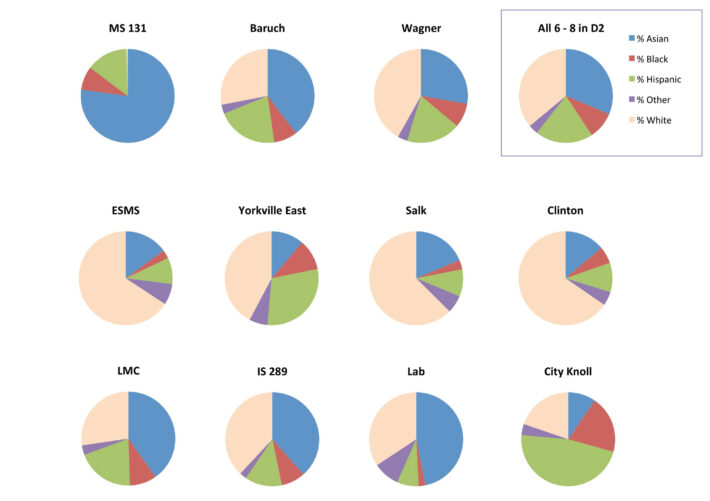
A special diversity committee met at the Family Welcome Center in Midtown, on Sept. 27, to discuss with parents and principals how segregated the public schools are in their region.
The new committee, founded by the Community Education Council for District 2, is designed to promote more racial equality in New York City public schools. CEC functions as an education advisory committee of parents and local residents who are tasked with presenting program and curriculum suggestions to the Department of Education. There are 32 councils in New York City, and one of the largest, District 2, includes Midtown, Chelsea, Downtown and the East Side.
“You can have diverse environments, but can still produce racial inequity,” said Laura Shmishkiss, the co-executive director of Border Crossers, an organization committed to training educators on how to dismantle racism and injustice in New York City schools. CECD2 asked Shmishkiss to advise its district.
“We are about a third Asian, a little over a third white, and then about a quarter Latinos, and we are really underrepresented by blacks. I think the blacks only account for 10 percent,” said Shino Tanikawa, the chair of the diversity committee of CECD2, who analyzed the demographics of the district. “But if you look at our schools, the distribution of students is not even.”

According to the DOE, each district includes elementary, intermediate, and junior high schools. Many schools in District 2 are segregated as a result of housing patterns. Schools where student are predominantly white or Asian generally have better academic performance, said Tanikawa.
There are 52 schools in District 2, out of that, 11 middle schools have a chance to diversify their student population since middle schools have a distinctive admission system that doesn’t depend on zoning, said Tanikawa. These schools can select their own criteria for admitting students.
“You meet with parent leaders. You meet with principals. You meet with elected officials. And you gather what’s happening in the district,” said Tanikawa in explaining the council’s work. “Now we are focusing on creating more diverse schools.”
Tanikawa said some parents and educators are unaware of their racial biases and are reluctant to send their children to more integrated schools. CECD2’s first step is to promote the awareness of racial inequity by providing workshops with Border Crossers and holding diversity committee meetings, in hopes of submitting specific plans to the DOE.

But the first challenge may be that CECD2 itself is struggling to recruit non-English speaking and ethnic parents for the council. Diverse parents are vital to the effectiveness of CECs because their suggestions on school zoning and programming get conveyed to the DOE, said Tanikawa.
According to state law, each CEC must have 12 volunteer members. Out of that total, one is reserved for the parent of a child who either is in a bilingual or English Language Learners program or has been in such a program within the last two years, a so-called “ELL parent”.
Tanikawa, who joined the council in 2009, said she has only witnessed one ELL parent who was soon expelled from the council due to zero attendance and participation.
Robin Broshi, the president of CECD2, admitted that finding an ELL parent for the council remains a problem, but said with 10 voting members the council can still legally function.
CECD2 has tried to recruit ethnic and non-English-speaking parents by offering online applications available in ten languages. CECs also are equipped with interpreters to help non-English speakers participate in meetings. Despite all these efforts, CECD2 still doesn’t have any applicants for the ELL vacancy.
Tanikawa said there are a number of reasons why immigrant parents are difficult to recruit. “They trust their schools. They trust their teachers,” she said. “They prefer not to tell the school what to do, or to tell the City Department of Education what to do.”
Another reason is fear, she said. Some non-English speaking parents are intimidated in a group setting when they are the only one who can’t speak English. Also, some ELL parents could be undocumented immigrants, said Tanikawa. “They just came here to making a living. They are not going to run for this because they are afraid.”
Tanikawa hopes the diversity committee will come up with an integration plan by next year.